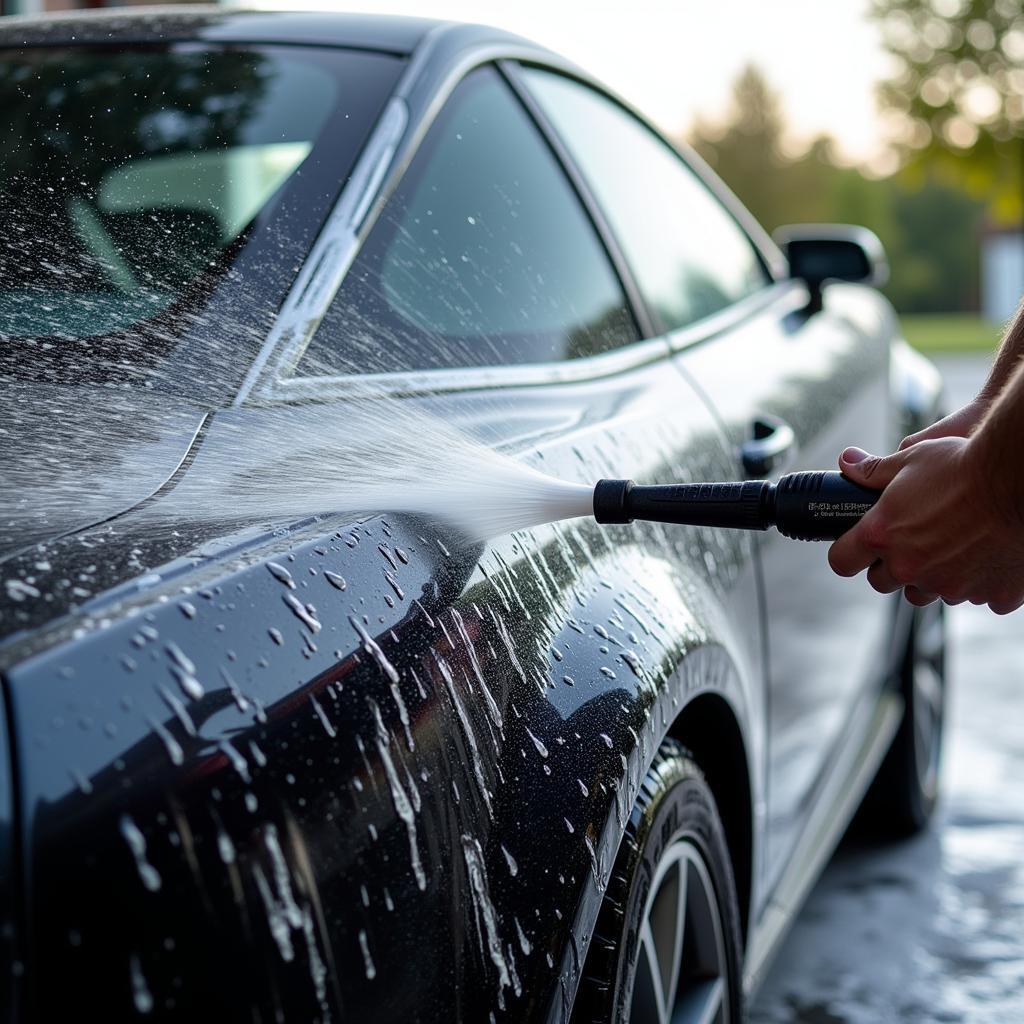When it comes to car detailing, pressure is everything. Whether you’re washing, rinsing, or applying a sealant, the amount of pressure you use can make or break the final result. Too much pressure, and you risk damaging your car’s paint. Too little, and you might not remove all the dirt and grime. So, What Kind Of Pressure Is Good For Detailing Cars? Let’s dive in.
Understanding Different Types of Pressure in Car Detailing
Before we talk numbers, it’s important to distinguish between the types of pressure used in car detailing:
- Water Pressure: This refers to the force of water coming out of your hose or pressure washer. Measured in pounds per square inch (PSI), water pressure significantly impacts the effectiveness of your wash.
- Air Pressure: Used for drying and applying certain products, air pressure is measured in similar units (PSI).
- Hand Pressure: This refers to the force you apply manually when washing, drying, or buffing your car. While subjective, it’s crucial to be mindful of hand pressure to avoid scratches and swirl marks.
What PSI is Safe for Washing My Car?
The ideal water pressure for washing your car is between 1200-1900 PSI. This range provides enough power to loosen dirt and grime without harming your car’s paint.
Important Tip: Always check your car’s manual for manufacturer recommendations on safe water pressure levels.
The Risks of Using High-Pressure Washers for Car Detailing
While high-pressure washers might seem efficient, using pressures exceeding 1900 PSI can:
- Chip Your Paint: The intense force can chip away at your car’s paint, especially on older vehicles.
- Damage Sensitive Areas: High pressure can harm delicate areas like seals, trim, and emblems.
- Force Water into Electrical Components: This can lead to costly repairs and malfunctions.
Low Pressure: When Less is More
In some car detailing steps, lower pressure is preferred. For instance:
- Rinsing: After washing, a gentle rinse with lower water pressure (800-1200 PSI) is sufficient to remove soap suds without being overly aggressive.
- Applying Sealant: A low-pressure sprayer or hand application is often recommended to ensure even coverage and prevent product wastage.
 Low Pressure Car Wash Rinse
Low Pressure Car Wash Rinse
The Importance of Proper Hand Pressure
When detailing your car by hand, be mindful of your hand pressure:
- Washing: Use light to moderate pressure with a wash mitt. Too much pressure can grind dirt into the paint and cause scratches.
- Drying: Gently pat your car dry with a microfiber towel. Avoid dragging the towel, as this can induce swirl marks.
Do I Tip Mobile Car Detailing Services?
Tipping for exceptional service is always appreciated. If you’re happy with your mobile car detailer’s work, consider a tip of 15-20% of the total cost. To learn more about tipping etiquette in the car detailing industry, read our article: do i tip mobile car detailing.
FAQs about Pressure in Car Detailing
Can I use a garden hose for car detailing?
While a garden hose works for a basic wash, it doesn’t offer the same control and pressure as a pressure washer.
What’s the best way to dry my car after washing?
Use a clean microfiber drying towel and gently pat the car dry, working in small sections.
How often should I detail my car?
For optimal results, aim for a full detail every 3-6 months.
Need Help Choosing the Right Pressure for Your Detailing Needs?
Understanding the right pressure levels is crucial for a flawless car detailing experience. For personalized advice and top-notch car care solutions, contact us via WhatsApp: +1(641)206-8880 or Email: [email protected]. Our 24/7 customer support team is here to help!

Leave a Reply